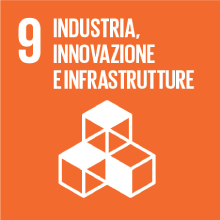INTERNATIONAL INDUSTRIAL ECONOMICS
- Anno accademico
- 2018/2019 Programmi anni precedenti
- Titolo corso in inglese
- INTERNATIONAL INDUSTRIAL ECONOMICS
- Codice insegnamento
- EM1060 (AF:284734 AR:161698)
- Modalità
- In presenza
- Crediti formativi universitari
- 6
- Livello laurea
- Laurea magistrale (DM270)
- Settore scientifico disciplinare
- SECS-P/06
- Periodo
- 2° Periodo
- Anno corso
- 1
- Spazio Moodle
- Link allo spazio del corso
Inquadramento dell'insegnamento nel percorso del corso di studio
Risultati di apprendimento attesi
Acquisire i concetti base dell’economia industriale in ambito in ternazionale.
Conoscere i principali modelli di analisi dell’economia industriale ed internazionale.
Conoscere e considerare criticamente le principali politiche economiche in materia di innovazione tecnologica e politica industriale.
Conoscere e saper utilizzare i dati relativi al contesto internazionale in ambito industriale.
2) Capacità di applicare conoscenza e comprensione
Utilizzare i concetti appresi per interpretare l’evoluzione dei sistemi economici industriali internazionali, delle politiche pubbliche, delle strategie delle imprese, della regolamentazione dei mercati relativamente all’economia industriale internazionale.
3) Capacità di giudizio
Saper formulare e argomentare ipotesi interpretative sullo sviluppo delle tecnologie e dei conseguenti effetti sugli agenti economici
4) Abilità comunicative: lo studente deve saper sintetizzare in modo efficace e coerente le conoscenze acquisite.
Prerequisiti
Module 1 in International Industrial Economics
Contenuti
I. Industrial economics. Review of some basic economics
II. Internationalization of production
III. Global Value Chain
IV. National and International Industrial Policy
V. Topics
Contents of single lectures will be:
1. What is Industrial economics
• Armstrong, Mark, and Robert H. Porter, eds. Handbook of industrial organization. Vol. 1,2 and 3. Elsevier, 2007.
2. International Industrial Economics and Globalization
• Grossman, G. M., & Helpman, E. (2015). Globalization and growth. The American Economic Review, 105(5), 100-104.
3. Microeconomics background: From cost function to production function
4. Concentration index and definition of the relevant market (M_intro)
• Verouden V. (2004), Concentration Indices and Market Shares in the EU Horizontal Merger Guidelines, FTC and U.S. DOJ Merger
Enforcement Workshop, Washington, DC, February 17-19, 2004.
5. The economics of Market Power
6. Stragetic behaviour, price competition, product diffferentiation
7. Firm’s size and Vertical integration
• Perry, M.K. ‘Vertical Integration: Determinants and Effects’, in Schmalensee, R. and R. Willig (eds) Handbook of Industrial
Organization, volume 1. (Amsterdam: North-Holland, 1989).
• Kumar, Krishna B., Raghuram G. Rajan, and Luigi Zingales. What determines firm size?. No. w7208. National Bureau of
Economic Research, 1999.
• Lafontaine and Slade ‘Vertical Integration and Firm Boundaries: The Evidence’, Journal of Economic Literature (2007) 45(3),
pp.629–685.
8. Industrial Economics: SCP paradigm and New Industrial Economics
• Ralston, Peter M., et al. "A Structure–Conduct–Performance Perspective of How Strategic Supply Chain Integration Affects Firm
Performance." Journal of Supply Chain Management 51.2 (2015): 47-64.
9. International Production
• Reinert (see Text), Ch. 9,10
10. MNE
• Reinert (see Text), Ch. 11
• Iammarino, Simona. "Transnational Corporations and International Production. Concepts, Theories and Effects." Regional
Studies 47.2 (2013): 296-297.
11.Working with data. Indexes of international trade openness
12. Clusters and Innovation
13. GVC and local effects
• Gereffi, Gary. "The global economy: organization, governance, and development." The handbook of economic sociology 2
(2005): 160-182.
• Aitken, B.J. and A.E. Harrison (1999) “Do Domestic Firms Benefit from Direct Foreign Investment? “American Economic Review,
89:3, 605–618.
• Blomstrom,M. and F. Sjoholm (1999) “Technology Transfer and Spillovers: Does Local Participation with Multinationals Matter?”
European Economic Review, 43:4–6, 915–923.
• Kugler, M. (2006) “Spillovers from Foreign Direct Investment: Within or between Industries?” Journal of Development
Economics, 80:2, 444–477.
14. GVC: upgrading process and measurement issues
• Gereffi, Gary; John Humphrey and Sturgeon, Timothy. 2005. “The Governance of Global Value Chains.” Review of International
Political Economy. 12(1): 78-104.
• Gereffi, Gary, John Humphrey, and Timothy Sturgeon. "The governance of global value chains." Review of international political
economy 12.1 (2005): 78-104.
15. Topics
• Empirics in Industrial Economics
• Policies
• Industry 4.0
• Convergence: media, telecom, digitalization
• Product space and complexity
• Industry 4.0: effect on labour requirements
• Reshoring
Testi di riferimento
Additional readings are:
Armstrong, Mark, and Robert H. Porter, eds. Handbook of industrial organization. Vol. 1,2 and 3. Elsevier, 2007.
Grossman, G. M., & Helpman, E. (2015). Globalization and growth. The American Economic Review, 105(5), 100-104.
Verouden V. (2004), Concentration Indices and Market Shares in the EU Horizontal Merger Guidelines, FTC and U.S. DOJ Merger
Enforcement Workshop, Washington, DC, February 17-19, 2004.
Perry, M.K. ‘Vertical Integration: Determinants and Effects’, in Schmalensee, R. and R. Willig (eds) Handbook of Industrial
Organization, volume 1. (Amsterdam: North-Holland, 1989).
Kumar, Krishna B., Raghuram G. Rajan, and Luigi Zingales. What determines firm size?. No. w7208. National Bureau of
Economic Research, 1999.
Lafontaine and Slade ‘Vertical Integration and Firm Boundaries: The Evidence’, Journal of Economic Literature (2007) 45(3),
pp.629–685.
Ralston, Peter M., et al. "A Structure–Conduct–Performance Perspective of How Strategic Supply Chain Integration Affects Firm
Performance." Journal of Supply Chain Management 51.2 (2015): 47-64.
Iammarino, Simona. "Transnational Corporations and International Production. Concepts, Theories and Effects." Regional
Studies 47.2 (2013): 296-297.
Gereffi, Gary. "The global economy: organization, governance, and development." The handbook of economic sociology 2
(2005): 160-182.
Aitken, B.J. and A.E. Harrison (1999) “Do Domestic Firms Benefit from Direct Foreign Investment? “American Economic Review,
89:3, 605–618.
Blomstrom,M. and F. Sjoholm (1999) “Technology Transfer and Spillovers: Does Local Participation with Multinationals Matter?”
European Economic Review, 43:4–6, 915–923.
Kugler, M. (2006) “Spillovers from Foreign Direct Investment: Within or between Industries?” Journal of Development
Economics, 80:2, 444–477.
Gereffi, Gary; John Humphrey and Sturgeon, Timothy. 2005. “The Governance of Global Value Chains.” Review of International
Political Economy. 12(1): 78-104.
Gereffi, Gary, John Humphrey, and Timothy Sturgeon. "The governance of global value chains." Review of international political
economy 12.1 (2005): 78-104.
Modalità di verifica dell'apprendimento
40% Individual or Group work
20% Class participation and in-class assessment
40% Final exam
For non attending student, there will be a final written examination.
The written examination will be structured as:
3 multiple choice questions, one numerical question, one open question.
Metodi didattici
Homeworks
In-class presentation
Lingua di insegnamento
Modalità di esame
Obiettivi Agenda 2030 per lo sviluppo sostenibile
Questo insegnamento tratta argomenti connessi alla macroarea "Città, infrastrutture e capitale sociale" e concorre alla realizzazione dei relativi obiettivi ONU dell'Agenda 2030 per lo Sviluppo Sostenibile


